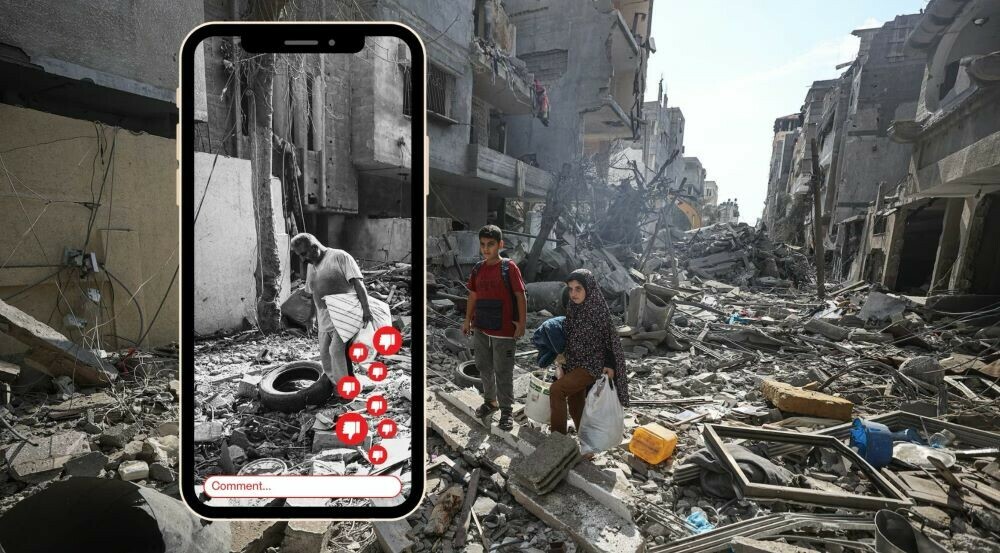Gaza 2.0 — The world’s first digital genocide
The revolution will not be televised, will not be televised
Will not be televised, will not be televised
The revolution will be no re-run, brothers
The revolution will be live.
In 1970, in the aftermath of the American Civil Rights Movement, the African-American poet Gil Scott Heron penned these words, urging people to the streets. His iconic words outlasted the Jim Crow laws that inspired them. But in that year, the promise of racial equality was not delivered as the hold of American apartheid remained.
The movement for Black self-determination, Heron powerfully echoed, would not be televised. The terrestrial media outlets of the day were rooted in the white supremacy that nurtured racial segregation, leaving the streets as the only outlet for Black protest and in his words, “revolution.”
The world is not what it was five decades ago. The advent and emergence of social media has provided new virtual platforms for protest. These digital venues have been vital for aggrieved populations within authoritarian nations, where the possibility of street protests and grassroots revolutions were impossible.
The “Arab Spring” uprisings are a testament to the “revolution being televised” on social media timelines, flipping the script and providing fuel for the subsequent phase of assembly that unfolded in city squares.
On the other side of revolution, however, is repression; and its most horrific form — genocide. In this new world order, social media platforms have not only become sites where genocides are justified, but also vividly depicted for the world to frightfully behold.
The inhuman violence in Gaza has pervaded our digital timelines and mobile phone screens more than any other genocide before it. Both genocides past, as well as those paralleling the gruesome episodes in Gaza.
Gaza is the world’s first digital genocide. A genocide where the images of intimate suffering and death are instantly transmitted onto our screens. The gory images of babies with chopped heads are liked and shared, and the streaming videos of children with bodies charred by white phosphorus are passed on to friends and followers with the click of a finger. Livestreaming footage of bombed hospitals and schools televised on Instagram Live, while the disastrous shortage of drinking water depicted on TikTok.
Gaza is hardly the world’s first genocide. In fact, there are several concurrent disasters taking place around the world, including Sudan and China. Yet, the prolific social media traffic dedicated to Gaza and the nonstop avalanche of images, videos, and livestreaming content conveying the sheer brutality inflicted on the Palestinian people is unprecedented.
The genocide in Gaza is not only televised, but experienced by all of us in real-time. We absorb the uncut violence unleashed upon the Palestinians who call the 140 square mile plot of land home — for now — at a furious rate and unfiltered colour that no human population has before.
This is — particularly because of the corporate media’s shameful bias — vital for the truth and transparency that undergirds journalistic ethics. But from an existential angle, curating a dangerous new (ab)normal where viewers on all sides are becoming numb to the images of Palestinian death and suffering. Desensitised to a scale of human tragedy that should shake us all.
These are images that, individually, would not have been printed by major Western newspapers 10 or 15 years ago. Images that should alarm anyone and everyone, but instead visuals of death and destruction are shared and posted, scrolled past and passed on with mechanised routine.
Dystopian would be an understatement. This genocide has pushed us to a state far past that, and perhaps, so far gone. If the genocide in Palestine, Gaza 2.0, were a Black Mirror episode, we would all be aghast by what the world and all of us could become.

But instead of watching, we are part of it. Virtual participants in a digital genocide that endangers our very humanity with every click and post. Instead of observing apocalyptic fiction on wide screens, we are immersed fully in a moribund reality on the screens attached to our palms.
This is where all of us are. Entrapped in a vile world order where scrolling past death is a routine part of our absurd new life.
This article was originally published by the author on his blog, ‘Dis/Orient’ and has been reproduced with permission.
Header image: Palestinians look for their belongings among the rubble of their destroyed houses. — Photo by Mustafa Hassona/Getty Images. Photo illustration by Melissa Clavijo.







